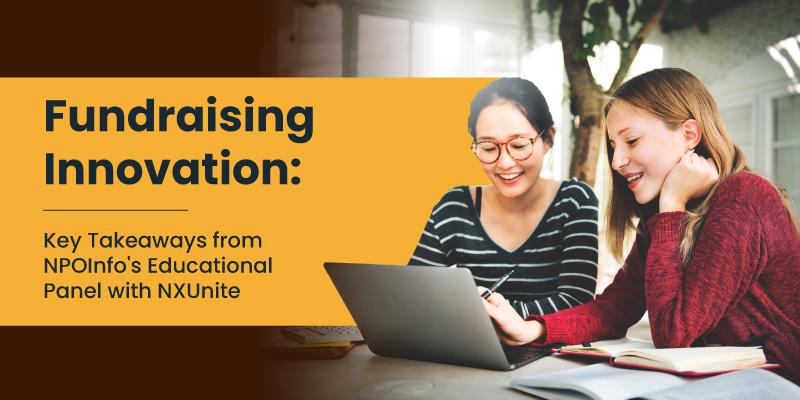While the Google Ad Grant program has been around for several years, Microsoft has finally come out with a similar program of its own. Ads for Social Impact, Microsoft’s Ad Grant program, provides eligible nonprofits with $3,000 per month in Microsoft ad spending. Microsoft then places these ads on a variety of its platforms, including Bing, Yahoo, AOL, Outlook, MSN, and Microsoft Edge.
While the Microsoft Ad Grant is certainly smaller than the Google version, which provides qualifying organizations with $10,000 per month, there are some key differences that make Microsoft’s program worth looking into. However, both programs have the same great benefits of spreading awareness for your cause, attracting new supporters, and boosting your fundraising efforts.
To help familiarize your organization with the Microsoft Ad Grant program, we’ll answer the following questions:
Here at NPOInfo, we provide nonprofits with the data they need to maximize their fundraising efforts. That’s why we’re featuring Microsoft Ad Grants, a fantastic way to boost fundraising and drive traffic to your nonprofit’s website. We’ll cover the basics of the program and how to apply so your nonprofit can take advantage of this opportunity. Let’s get started!
 What Is a Microsoft Ad Grant?
What Is a Microsoft Ad Grant?
Starting in June 2022, Microsoft began offering an ad grant program called Ads for Social Impact. The goal of the program is to help nonprofits grow their reach and revenue by increasing their visibility online. To assist eligible organizations in promoting their websites, the Ads for Social Impact program equips nonprofits with $3,000 per month to spend on ads appearing on Microsoft’s platforms.
While Google Ads appear on Google, Microsoft Ads show up on several websites, including Bing, Yahoo, AOL, Outlook, MSN, and Microsoft Edge. To give you an idea of how Microsoft Ads work, we’ll show you an example in action.
Perhaps you’re a community member who loves working with animals. As an animal lover, you might want to make a difference in your community, leading you to search for an animal shelter on Bing. This search may pull up a Microsoft Ad for a local animal shelter’s website where you can learn more about any volunteer or donation opportunities.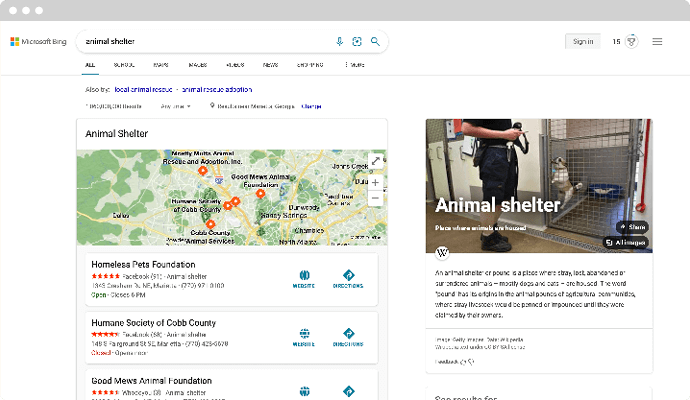
Although Microsoft offers a smaller grant than Google, there are some unique benefits to enrolling in the Microsoft program. While the Google Ad Grant program requires you to create a separate ad account, the Microsoft Ads for Social Impact program adds your grant to your existing paid account. In essence, it acts as a coupon that bolsters your Microsoft monthly paid search budget. That way, you can run all of your campaigns in one centralized account dedicated to your organization.
Since the Microsoft Ad Grant is a discount on your regular paid ad account, there are fewer restrictions on your ad activity. For example, Google requires organizations to meet minimum click-through rates and quality scores and a maximum cost-per-click. However, Microsoft has none of these restrictions, letting you use your grant as you would for a paid search campaign.
With a basic understanding of Microsoft Ad Grants in mind, we can now take a look at the benefits of leveraging the program.
 Why Should My Organization Use Microsoft Ad Grants?
Why Should My Organization Use Microsoft Ad Grants?
Now that you know a little more about what a Microsoft Ad Grant is, you might be wondering why it would be useful for your nonprofit. Here are a few benefits of enrolling in the Ads for Social Impact program: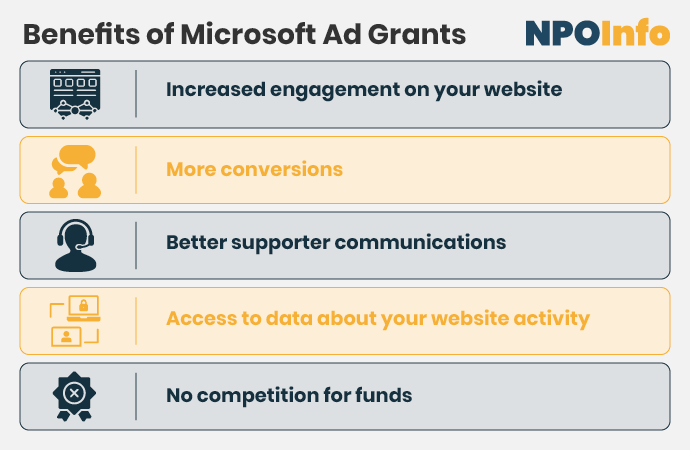
Increased engagement on your site.
The key to an effective nonprofit website is to feature high-quality content. However, if potential supporters can’t find your content, then it’s not serving to expand your website’s reach as it should.
With a Microsoft Ad Grant, you can make sure prospective supporters see the web pages that provide information on topics they’re interested in. For example, if someone searches “volunteer for a soup kitchen” on Bing, they’ll want to know when and where they can contribute their time to an organization. Consequently, your nonprofit can use the Microsoft Ad Grant to promote your site’s volunteer registration page for these searchers.
More conversions.
Many people think of conversions in terms of sales and other for-profit activities, but nonprofits can also track the impact of their campaigns using conversion data. When your website and digital marketing strategy reach different audiences and help them find what they need quickly, you can increase conversions. Take a look at these online conversions that your organization might track:
While having the right content is the true root of increased engagements and conversions, Microsoft Ad Grants can help you boost your content’s reach in order to maximize its impact.
Better supporter communications.
Most nonprofits utilize a variety of communication tools including email, phone calls, and social media. While it’s important to keep your supporters informed, it’s equally as important not to overwhelm them with too much information.
Microsoft Ad Grants work in conjunction with your existing communication strategies to spread the word about your organization. They make it easy for your supporters to find your content on their own without direct interference from your nonprofit.
Access to data about your website activity.
Microsoft understands that the more data you have about how your supporters interact with your website, the better you’re able to optimize your Microsoft Ad Grant. That’s why they provide nonprofits with tools such as event tracking, campaign analytics, and traffic insights to learn more about the effectiveness of your content and campaigns.
With this information in mind, your organization is better equipped to optimize your website’s content and increase engagement in the process.
No competition for funds.
As a participant in the Ads for Social Impact program, you’ll never have to worry about how much funding you’ll receive. Traditional grant programs typically distribute a limited amount of money to organizations based on their needs. However, the Microsoft Ad Grants program gives each organization the full $3,000 per month in Microsoft ad spending.
With the security of knowing exactly how much money your organization will receive from Microsoft each month, you can spend less time worrying about your funding and more time optimizing the grant.
 How Can My Nonprofit Use Its Microsoft Ad Grant?
How Can My Nonprofit Use Its Microsoft Ad Grant?
When you begin participating in the Ads for Social Impact program, it’s best to outline your goals for how you’d like to use the grant money. That way, you can make sure you’re optimizing the grant in a way that makes sense for your organization.
For inspiration, here are some common goals of nonprofits participating in the Microsoft Ad Grant program:
- Collecting more donations
- Spreading awareness for your organization’s cause
- Recruiting volunteers
- Informing supporters about upcoming opportunities
- Selling tickets for events
- Gaining email list subscribers
- Gathering petition signatures
- Engaging more supporters on social media
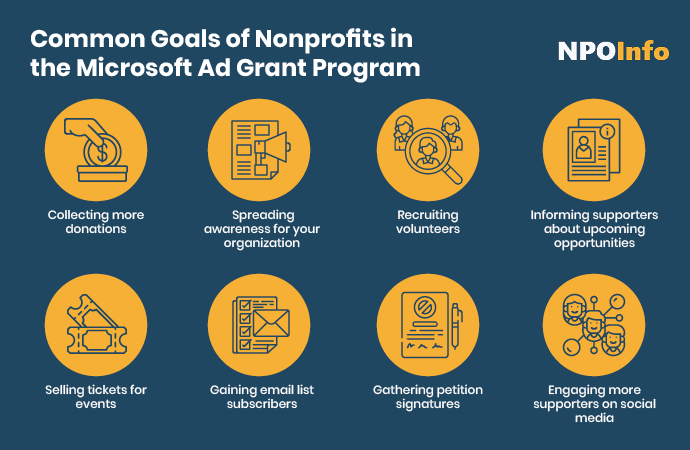
By delineating your goals ahead of time, you’ll get the most out of the Microsoft Ad Grant program and be able to easily track progress made throughout your ad campaigns.
 How Do I Know If My Organization Is Eligible for the Program?
How Do I Know If My Organization Is Eligible for the Program?
In order to participate in the Ads for Social Impact program, Microsoft requires organizations to abide by three eligibility requirements. The first requirement is that all participating organizations must be legally recognized nonprofits or non-governmental organizations in their respective countries. In the United States, this means obtaining tax-exempt 501(c)(3) status from the IRS.
Next, Microsoft stipulates that organizations must operate on a not-for-profit basis and serve a specific mission to benefit their communities. The mission examples they give include aiding the poor, preserving the environment, and promoting human rights.
Lastly, it’s important to Microsoft that all organizations participating in their ad grants program are inclusive and respectful of all types of people. Therefore, they do not accept organizations that have a policy or mission based on discrimination of any kind.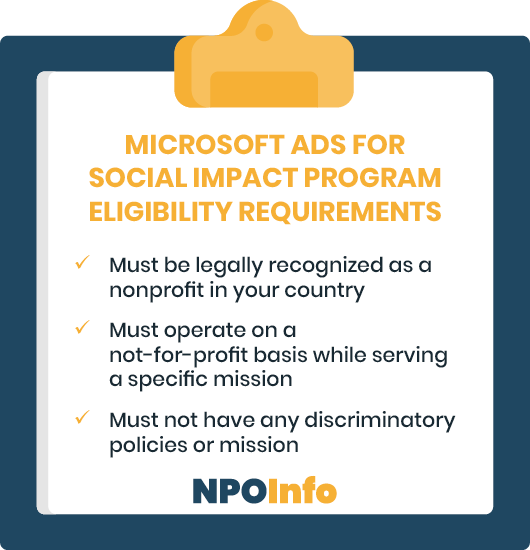
Even if your organization meets the three eligibility requirements outlined above, it still may not be eligible for the program. Microsoft lists various ineligible organization types, including:
- Governmental organizations
- Schools, colleges, and universities
- Healthcare organizations
- Public utilities
- Financial institutions
- Professional, commerce, and trade associations
- Professional and semi-professional sports organizations
- Political, labor, and fraternal organizations
If you’re still unsure if your organization is eligible for the Microsoft Ad Grant program, you can check out Microsoft’s page on program eligibility here.
 How Do You Apply for Microsoft Ad Grants?
How Do You Apply for Microsoft Ad Grants?
Once you’ve determined that your organization is eligible, it’s time to apply for the Microsoft Ad Grant program. The application process is divided into two separate parts.
The first part of the process involves applying for Microsoft for Nonprofits. Microsoft for Nonprofits encompasses several different resources and offers for charitable organizations, one of which is Microsoft Ad Grants. When applying for Microsoft for Nonprofits, there are four short steps to complete.
- Welcome & Policies: To begin, Microsoft asks you to name your organization’s point of contact and review some of their program policies.
- Organization Info: Next, you’re prompted to fill out more basic information about your organization, such as your organization’s name, address, website, phone number, size, budget, mission statement, and IRS EIN.
- Verify Phone: In this step, Microsoft asks you to verify your organization’s phone number so they can easily get in contact with you.
- Create Account: Lastly, you can set up the login for your Microsoft for Nonprofits account.
Once your Microsoft for Nonprofits application is complete, you should hear back from Microsoft about your program acceptance within 24 hours.
After your organization is enrolled in the Microsoft for Nonprofits program, it’s time to apply for the Microsoft Ad Grant program specifically. Microsoft will ask you for additional information about your organization and your point of contact. Once you submit that information, Microsoft will notify you of the outcome of your application within 10 business days.
 How Do I Optimize My Microsoft Ad Campaigns?
How Do I Optimize My Microsoft Ad Campaigns?
If you’ve taken the time to research and apply for the Microsoft Ads for Social Impact program, you’ll probably want to make sure you’re getting the most out of the program.
While the ads you create should be based on the goals you set at the beginning of the process, there are certain ways you can run your account to optimize your campaigns and ultimately conquer your goals. Here are some Microsoft Ad Grant campaign best practices: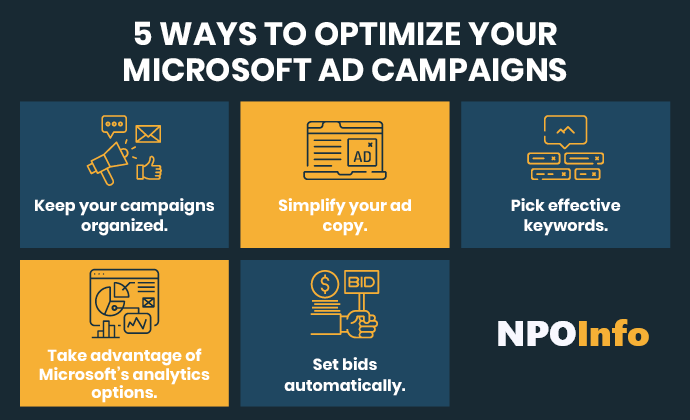
Keep your campaigns organized.
It’s more impactful for your potential supporters to see an ad that’s relevant to them. That’s why it’s important to organize your campaign according to your goals. For example, you may have a campaign encouraging donations and a different campaign for scouting volunteers. This method will not only help you stay on top of your campaigns, but it will also make it easier for your supporters to engage with your organization in the ways they choose to.
Simplify your ad copy.
When creating your ads, remember to keep them simple. People will be skimming through the results page very quickly, so you want to capture their attention with clear and concise copy. Use short sentences, and avoid any uncommon acronyms or abbreviations that may confuse people.
Pick effective keywords.
When choosing keywords, you’ll want to think about what your supporters are likely typing into the search box when trying to find information about your organization. Remember to be specific. For example, choosing “trees” as a keyword may display your ad in searches for tree-cutting services. If your organization stands to preserve trees, “save the trees” or “protect the environment” may be more relevant.
Take advantage of Microsoft’s analytics options.
As mentioned before, Microsoft has analytics options such as event tracking, campaign analytics, and traffic insights. You’ll want to use this data to figure out how your supporters are interacting with your campaigns and how you can improve them. For example, some of your keywords may simply draw users to your landing page while others may be more useful for generating conversions such as volunteer signups or donations. These would be the keywords your organization should prioritize.
Set bids automatically.
When you run a Microsoft Ad campaign, you’ll have to bid for keywords with other organizations. By using automated bid strategies, you can devote more time to developing effective campaigns rather than managing them. Microsoft offers automated bid strategies for enhancing your cost-per-click, maximizing clicks, maximizing your conversions, and hitting your target cost per acquisition and return on ad spend.
By following these five best practices, you’ll create more effective ad campaigns, maximizing the impact of your Microsoft Ad Grant.
 What If I Need Help Managing My Microsoft Ad Grant Account?
What If I Need Help Managing My Microsoft Ad Grant Account?
If you’re overwhelmed at all after learning about the Microsoft Ad Grant process, you’re not alone. Many nonprofits opt for using a digital marketing agency to help them navigate the program.
Since they have familiarity with managing ad grants, using the appropriate agency will allow you to reap all the benefits of the program without having to divert too much team member time. Ad grants agencies can help you with any step of the grant management process, including: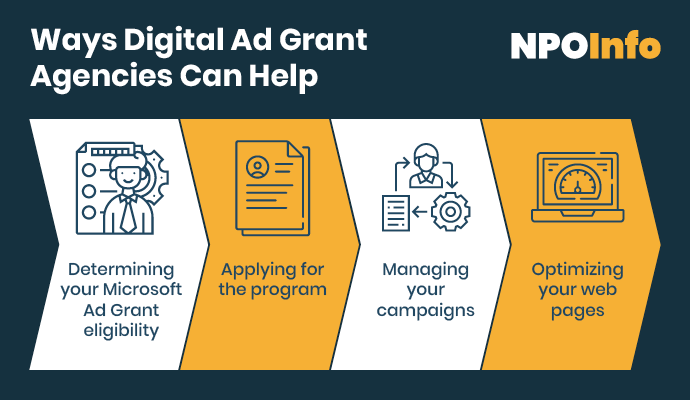
- Determining your Microsoft Ad Grants eligibility
- Applying for the program
- Managing your campaigns
- Optimizing your web pages
No matter what questions or troubles you have with the program, Microsoft Ad Grants agencies are there to help.
 Additional Resources
Additional Resources
Now that you know the ins and outs of Microsoft Ad Grants, you likely have a better idea of how the program could benefit your organization. This invaluable tool will help you spread your mission and ultimately work more efficiently toward your fundraising goals.
If you’re looking for even more ideas for how to boost your fundraising efforts, we’re here to help. Check out these resources that feature additional fundraising tools:
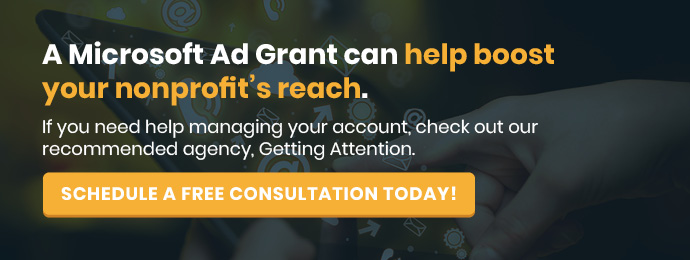


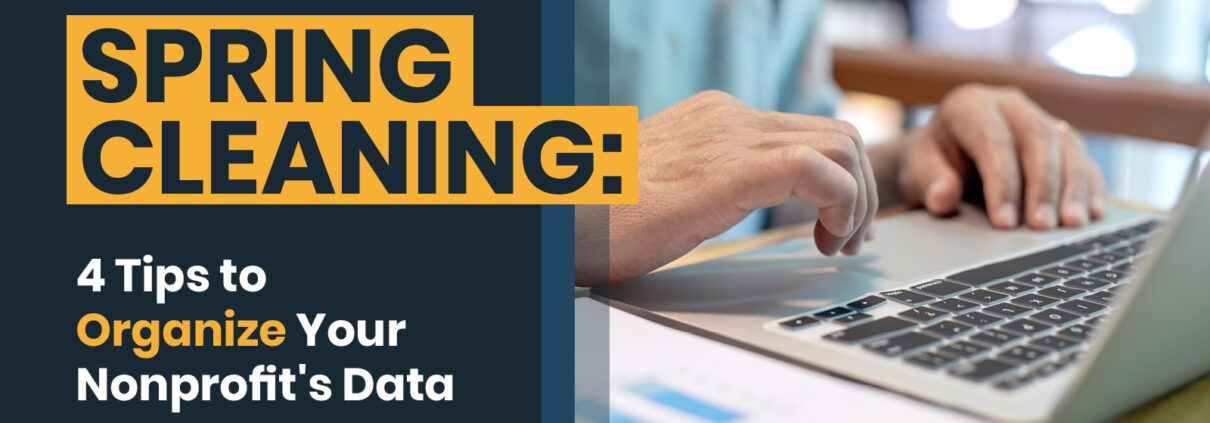
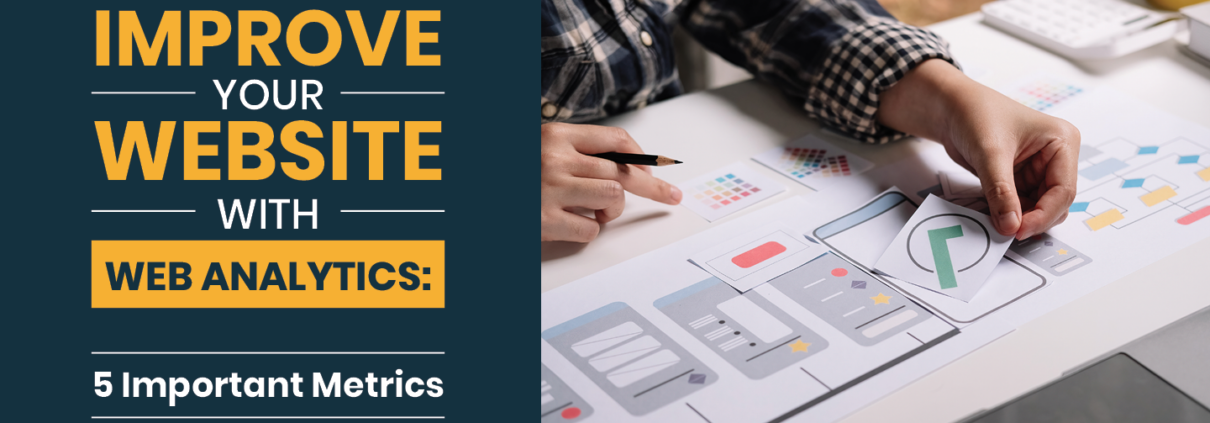

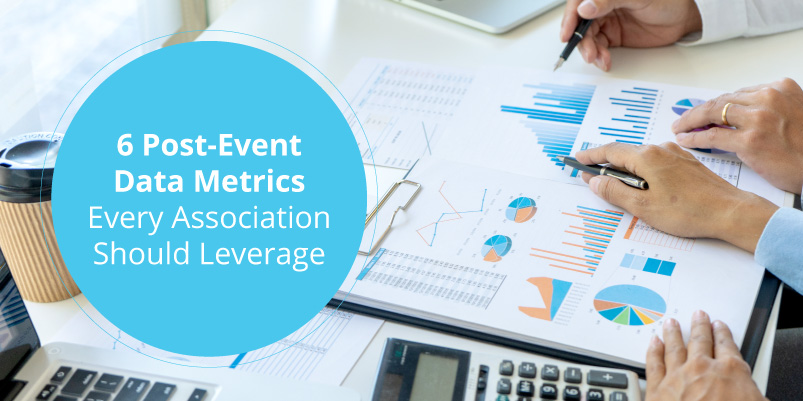

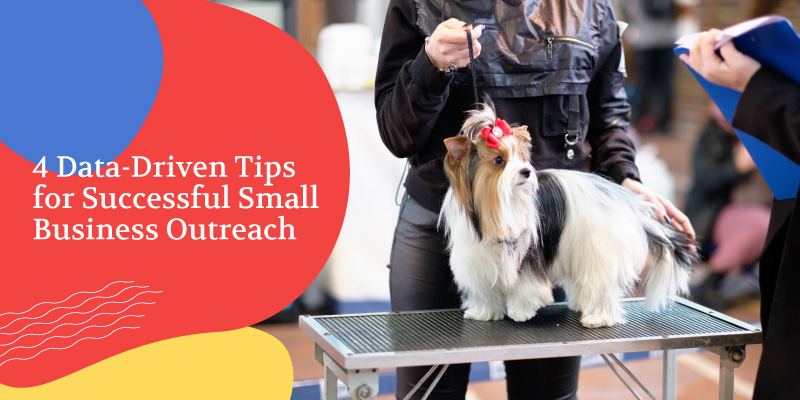


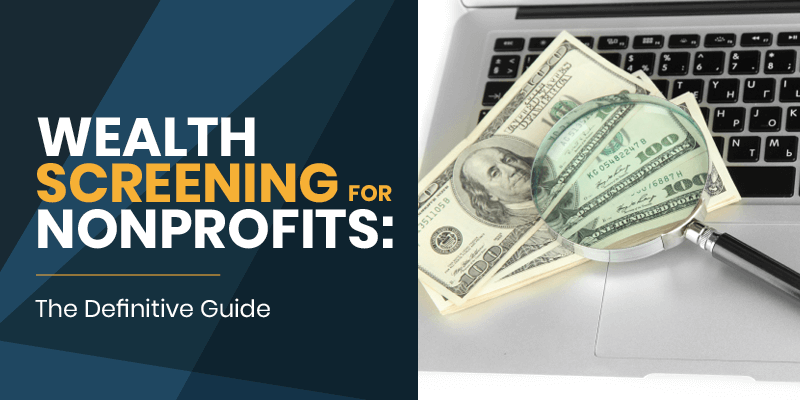


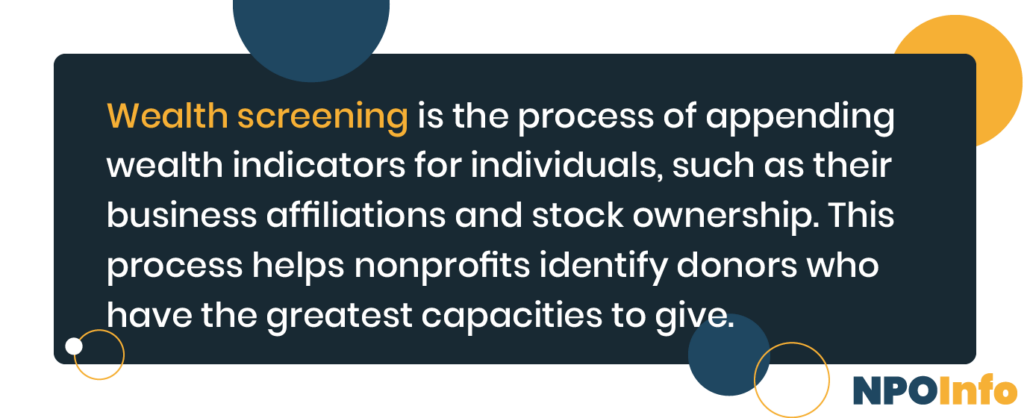

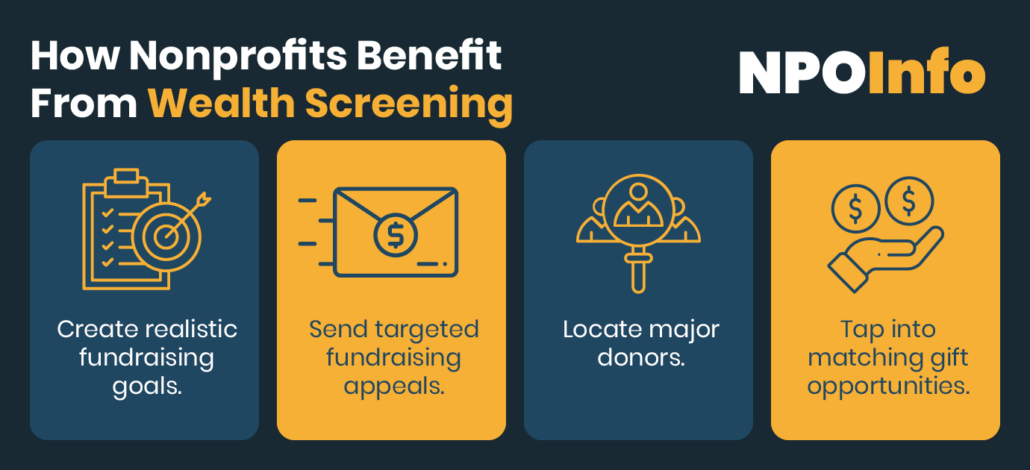

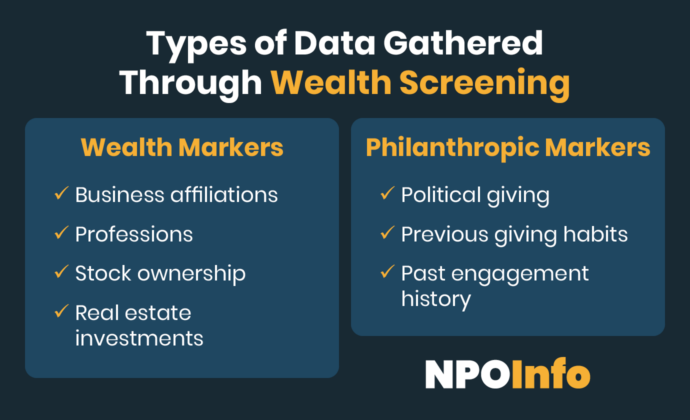
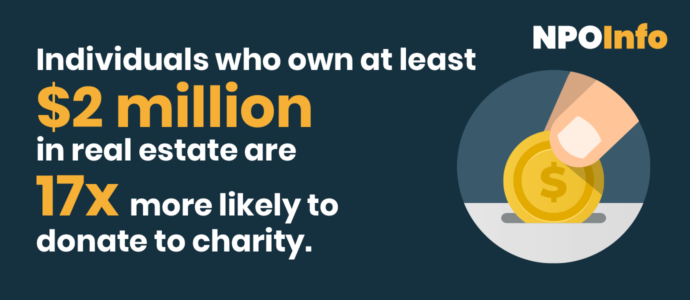


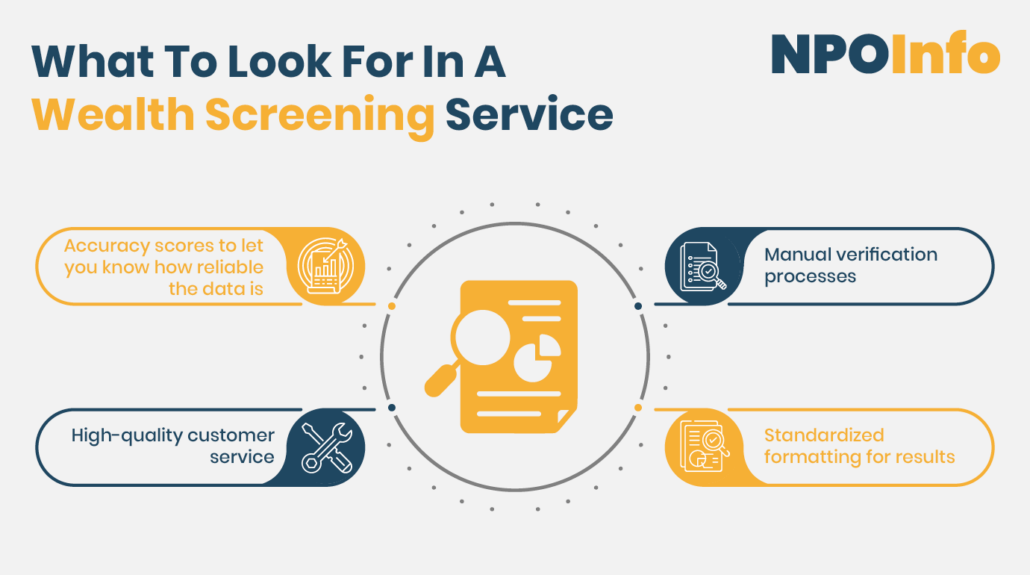

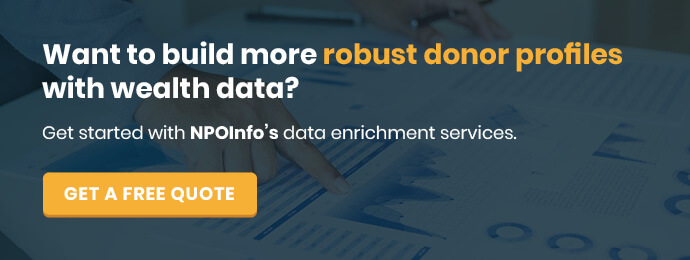

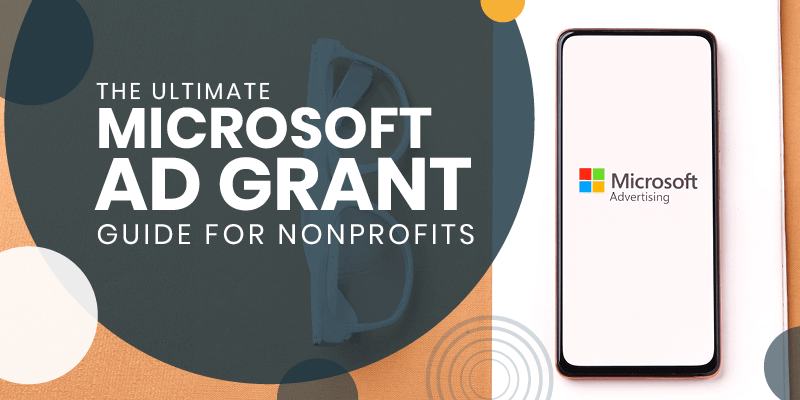

 What Is a Microsoft Ad Grant?
What Is a Microsoft Ad Grant?
 Why Should My Organization Use Microsoft Ad Grants?
Why Should My Organization Use Microsoft Ad Grants?
 How Can My Nonprofit Use Its Microsoft Ad Grant?
How Can My Nonprofit Use Its Microsoft Ad Grant?
 How Do I Know If My Organization Is Eligible for the Program?
How Do I Know If My Organization Is Eligible for the Program?
 How Do You Apply for Microsoft Ad Grants?
How Do You Apply for Microsoft Ad Grants? How Do I Optimize My Microsoft Ad Campaigns?
How Do I Optimize My Microsoft Ad Campaigns?
 What If I Need Help Managing My Microsoft Ad Grant Account?
What If I Need Help Managing My Microsoft Ad Grant Account?
 Additional Resources
Additional Resources
